2025 Caravaggio
2025 Close by, so far – Landscapes of Infinity
2024 Nudity and Landscape
2024 Handarbeit
2023 The Shift of Focus
2022 The Shift of Focus / Installation
2021 Harvest
2019 Reflection
2018 INSIDE OUT
2016 Pieces & Elements
2014 Collective Jumps
2014 Der Bau – Gruppe
2013 HEUTE: volkstanzen
2013 Hinter den Gärten
2013 Experience #0.3
2012 Experience #1
Studies on Infinity #3 – Caravaggio
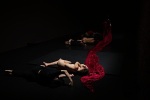
.
EN
With Caravaggio, Isabelle Schad continues her long-term research into movement materials and their potential to unfold through infinite variations.
Focusing on the relationship between self and other/mirror, skin and clothing, dressed and undressed, Caravaggio forms part of an ongoing artistic trajectory that also includes the recent work Close by, So far.
Caravaggio’s paintings combine a realistic observation of the human condition—both physical and emotional—with dramatic lighting. His depictions of religious scenes featuring ordinary people reveal the violence hidden in shadows.
Inspired by these aesthetic resonances, and drawing from movement principles rooted in Zen, somatics, Aikido, and voice work, the choreographic material unfolds beyond the traditional stage — revealing its power within a durational, site-specific performance installation.
DE
Mit Caravaggio setzt Isabelle Schad ihre langjährige Recherche zu Bewegungsmaterialien und deren Potenzial fort, sich in unendlichen Variationen zu entfalten.
Mit dem Fokus auf die Beziehung zwischen dem Selbst und dem Anderen/Spiegel, Haut und Kleidung, Bekleidetem und Entkleidetem fügt sich Caravaggio in einen fortlaufenden künstlerischen Forschungsprozess ein, zu dem auch die jüngste Arbeit Close by, So far gehört.
Caravaggios Gemälde verbinden eine realistische Beobachtung der menschlichen Verfassung – körperlich wie emotional – mit dramatischer Lichtführung. Seine Darstellungen religiöser Szenen mit gewöhnlichen Menschen offenbaren die im Schatten verborgene Gewalt.
Ausgehend von diesen ästhetischen Resonanzen und inspiriert von Bewegungsprinzipien aus Zen, Somatik, Aikido und Stimmarbeit entfaltet sich das choreografische Material jenseits des klassischen Bühnenraums – und offenbart seine Kraft in einer dauerhaften, ortsspezifischen Installationsperformance.
…
CAST & CREDITS
Concept & Choreography: Isabelle Schad
Co-choreography & Dance: Viviana Defazio, Forough Fami, David Kummer, Yen Lee, Arantxa Martinez, Lea Pischke, Claudia Tomasi, Aya Toraiwa, Maja Zimmerlin
Composition & Sound: Damir Simunovic
Light Design: Bruno Pocheron
Voice Coaching: Ignacio Jarquin
PR, Outreach: Elena Basteri
Production Management: Heiko Schramm
Production: Isabelle Schad | Funded by: Senate Department for Culture and Social Cohesion of the State of Berlin | Supported by Wiesen55 e.V.
.
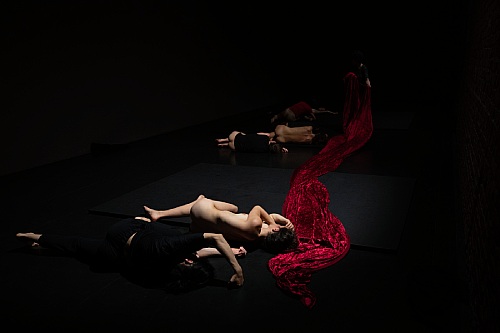
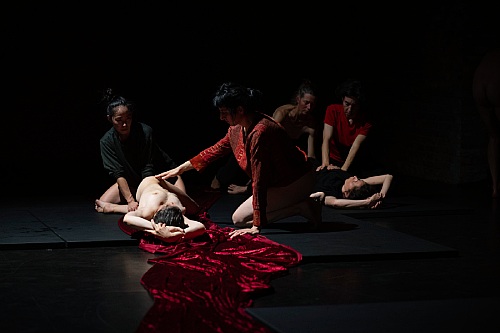
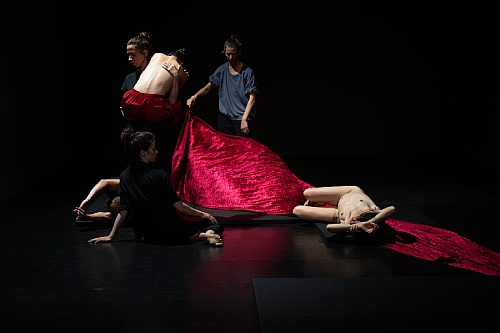
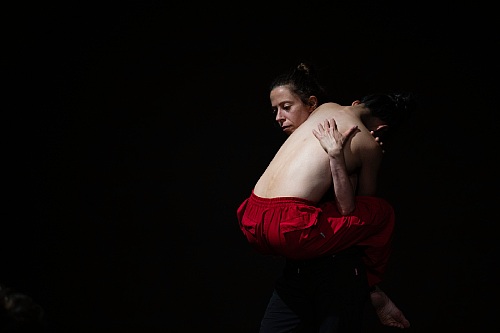
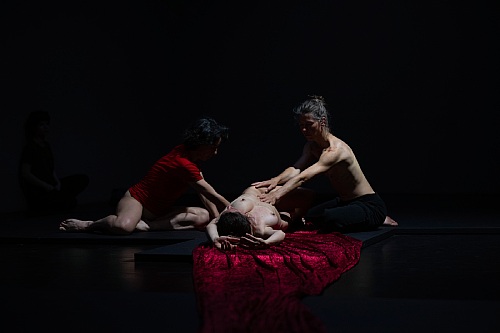
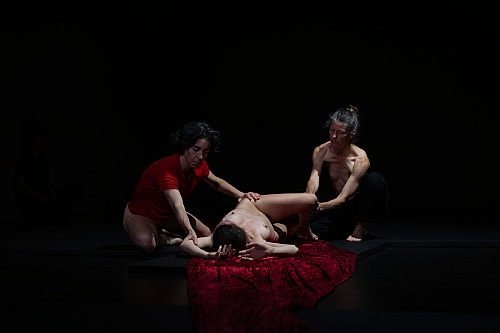
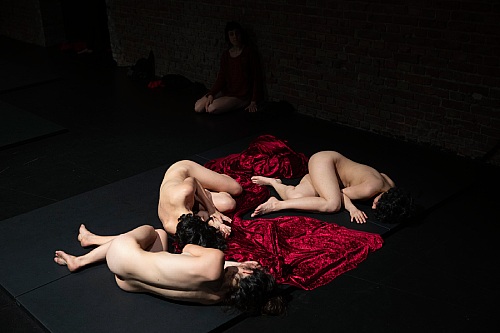
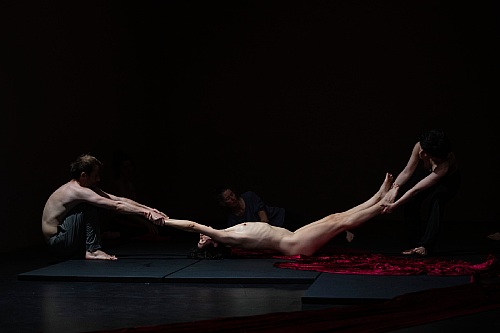
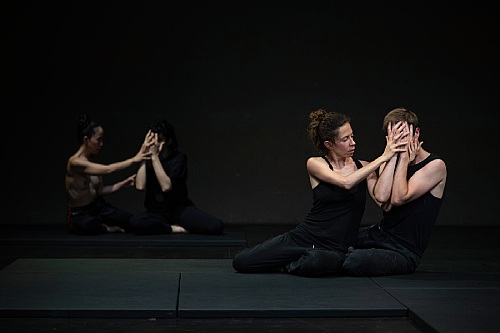
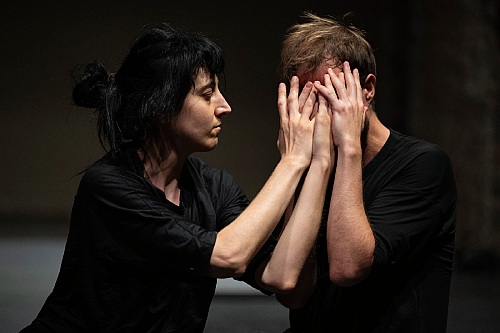
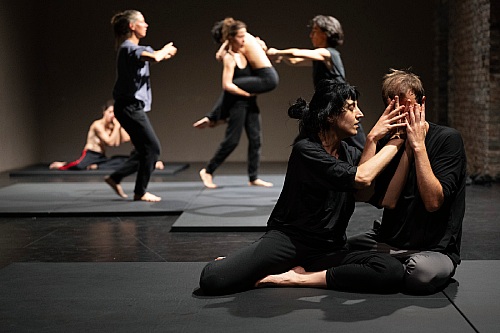

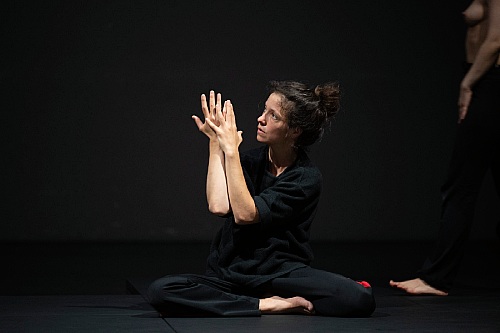
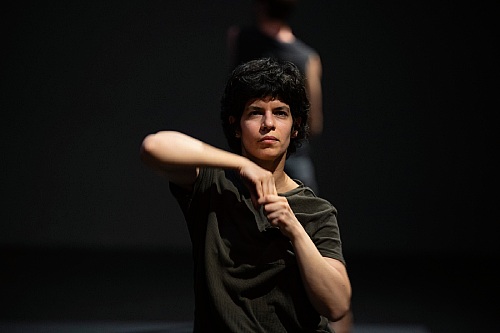
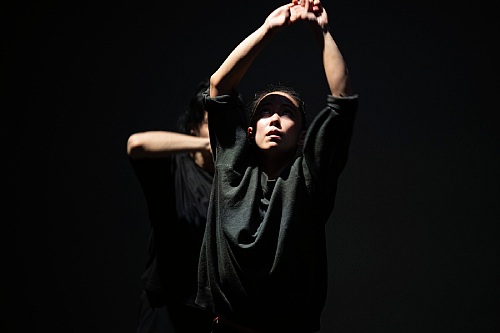
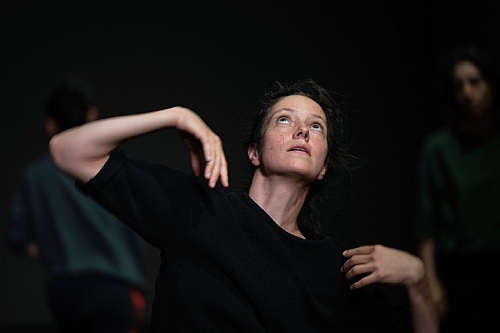
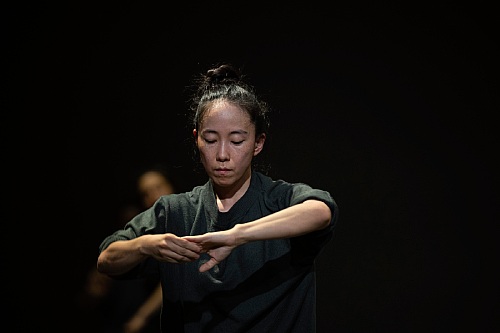
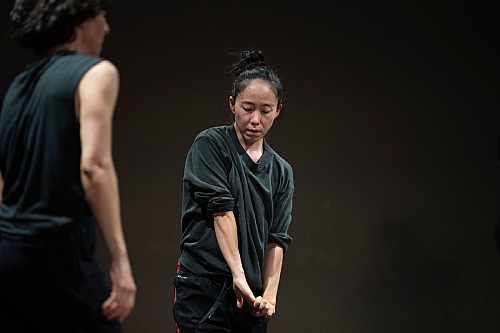
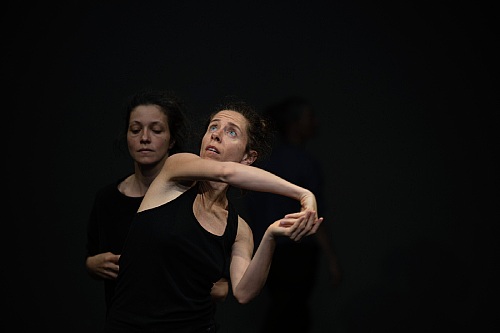

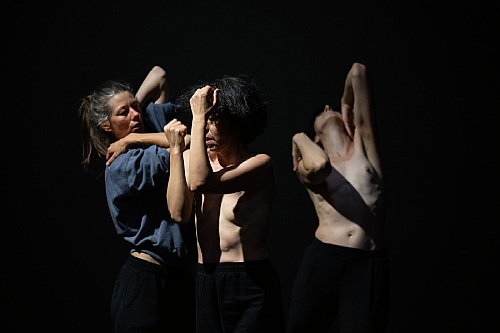
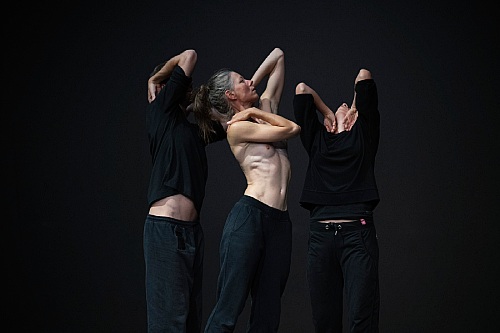
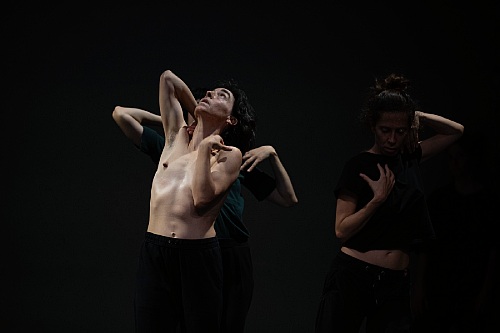
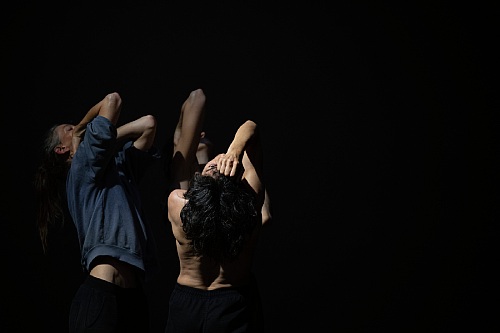

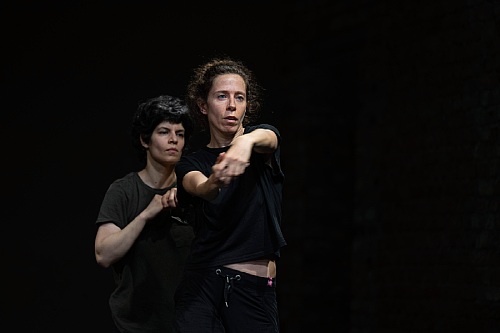
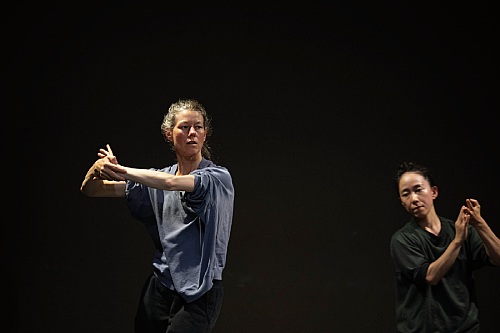
.
.
Studies on Infinity #3 – Caravaggio
Three questions to Isabelle Schad from Elena Basteri
The series Studies on Infinity is always an opportunity for you to share the current state of your research with an audience during the Wiesenburg Sommerfestival – through a durational format based on loops. What is the focus of your research this year?
In my recent piece Close by, So far I played around with some surrealistic ideas, where the dreams and landscapes of diverse personal and formal relationships blur into one another. Long fabrics create imaginary landscapes like sandy dunes, and the clothes people wear extend the bodies and become part of a landscape as well. I experimented for the first time with the shifting status of the body, with a nude, dressed or half-dressed person being present simultaneously. Previously I mostly separated nude from dressed within groups of people – and here the mix started to create new and interesting tensions. The different type of visibility appearing at the same time created a strong tension that reminded me a lot of classical paintings, like those of Hieronimus Bosch from the Renaissance / late medieval period. Baroque paintings seemed to pop up like crazy as well … and in some of the constellations between clothed and non-clothed persons I was reminded of Caravaggio, where the shadow is so masterfully worked from the darkness of the canvas into the light, into the skin or into the folds of a fabric.
As the title suggests, the painter Caravaggio became a major influence on this new work. Can you describe what aspects of his work inspired you, and how this inspiration was transposed into your own artistic practice?
Caravaggio’s paintings are incredibly impressive in their tension between beauty and violence – where the scenes seem to fall into place so naturally. He obviously worked with ordinary people to stage his religious scenes. Nothing seems artificial or artificially staged – people are apparently painted just as they are, but with wild expressions, for example, of ecstasy – like the Maria Magdalena – or surprise or pain or anger. If you look at certain details, like how he painted the hands or the faces, they are extremely detailed and specific. I can relate to this kind of attention to detail so much, as in my work hands and faces are shown as if they were the main actor. They become the centre of attention while the whole body in motion has to be coherently worked and present as well – in each and every moment.
For this coherence to appear – kind of naturally falling into place – weight shift and the two forces of pushing and pulling within us need to be studied and practised. It’s like understanding life on this planet – life as a dance with gravity.
In our daily routine of training, warming up or studying these forces, we practise aikido and qi gong or shiatsu. There are forces of permeability (Durchlässigkeit), and this creates a coherent ‘whole’ in as far as posture or beauty in movement is concerned.
Caravaggio’s paintings are full of these flowing forces. They’re full of energy, and it coincides with what I look for in my choreographic work – as well in my pedagogic (or social) work, by the way. It’s the force that connects us, from person to person, from inside to outside. Or, let’s say, it stops separating the inside from the outside.
On the subject of light and shadow, everyone talks about the violence hiding in the shadow in Caravaggio’s paintings. I’m not sure if I agree. I think many emotions shimmer through his shadows. But in this sense, being dressed or not gives rise to a wonderful opportunity, if we extend someone’s nude skin into a shadow – also an energetic one – through the dark clothes on the one hand and the energetic extension on the other. I love the idea of an analogue shadow…
The performers in the piece are mostly part of Mobile Ensemble – a group of people who have been working with you regularly for the past ten years or so. With Mobile Ensemble you propose a mode of working that contrasts with the project-based model often imposed by the independent scene. Can you explain how this model works?
This wonderful constellation of artists I have been working with for the past 10 or more years is connected by the practice I have insisted on making the core of each of my works during this time.
After my profound interest in somatics, such as BMC, for over 10 years now I have been dedicating my time to the practice of aikido. I attend Gerd Walter’s dojo three to four times a week. The word aikido means something like the harmonic (ai) universal energy (ki) as a pathway (do). If you consider life and the work you are doing and wanting to make sense with as a pathway, then hopping from project to project doesn’t make sense any more.
The way to link everything – from place to place, from life to work, from person to person and from piece to piece – everything that is so precarious – and now more than ever – this potential to link things has been the practice in my case. Once we meet, there isn’t a day that we skip training (which is the practice), we start every single day with that profound work – which has to exist for itself, apart from being a healthy ground for each creation.
This willingness to follow a pathway (do) in understanding is what connects us.
The constellation of people who have been working with me in such a way is a large group –more than 30, lots of them still based in Berlin, some moved away or back to where they arrived from. But each time we meet again, we practise together and continue to work together as if no time has passed. Not everyone from the group knows everyone else. But through the practice, we’re profoundly connected, and it’s immediate. It’s a great way of being together.
Recently, since the group work The Shift Of Focus, a group of around 12–15 performing artists has been around me more continuously, and we’re sharing the space at the Tanzhalle Wiesenburg way more often, and people are starting to take on other responsibilities, like assisting or learning more about sound and light or creating their own works or their own focus in their practices.
Many of those who worked with me earlier on have had their own careers for a long time now – artists like Sonja Pregrad, Nir Vidan, Lea More and many many more.
It’s wonderful to experience the tissue we have formed together, and I’m curious where this idea of connection through practice, artistic work, mutual support and mobility can take us.
At the moment it seems a relevant and potent tool to propose for moving on in such difficult times of cultural cuts, wars and crises everywhere in the world. And it concerns us all. I’m confident that this energy given to the connection with and between one another is what the world needs right now.
.
Dough, Stones, Storms
By Alice Heyward, published on 30 June 2025 at tanzschreiber.de
Studies on Infinity #3 – Caravaggio by Isabelle Schad was performed 27–28 June at Wiesenburg Sommerfest.ival 2025. Inspired by the Baroque painter’s intense naturalism, it blends collective body awareness in cycles of drama without climax or resolution.
Sombre and unemotional, Studies on Infinity #3 – Caravaggio references the embodied vulnerability of bodies in motion in paintings like The Calling of Saint Matthew (1599–1600), translating expressive bodily language and dramatic chiaroscuro into a cycle of relationality, emergence, and grounding. It expands Isabelle Schad’s long-term, in-depth research-practice of somatic and sensorial group choreography without narrative arc or personas.
The long, slim room of Tanzhalle Wiesenburg is laid with large, thin mats, demarcating three stages—near, midrange, and far—that shape my triadic perspective down its barrel. Eight dancers inhabit the space, some dressed in loose, dark clothing, others topless, pantless, or fully naked. Some lean against the walls, or curl on the mats like mounds of earth. Their limbs unravel, exposed by skin and cloth, their arms forming loose rings as their hands hold their elbows. These unfurling members are invitations, taken by other bodies that approach the grounded forms and gently use their hands to stretch the shoulders and rib cages away from the opposing torque of the pelvises. Those lying on the mats are like dough being firmly kneaded; those handling them emphasise the figure-eight spiral of movement through their bodies. Limbs are extended as the body’s fabric stretches further, sometimes elevating someone completely off the mat.
The dancers fold in and out of the roles of stretched, stretcher, observer: doing and being done to, seeing and choosing the parts they play, pulling, folding, resisting and yielding. Landscapes gradually dissolve into one another, as the bodies of skin and fabric curl and settle into stillness. The motion from the pulling bodies lingers in the space. I observe these separate, ancient formations as though they are underwater, with currents pushing forces above and around them.
Each in their own time, they sit up and use their hands to cover one another’s faces, and sing long, exhaling notes into fingers, exchanging shape and sound, melting into and out of one another. Their ascension into verticality continues as they stand up and perform bouncing, lunging gestures in duets. Face to face in a gentle, playful fight, recalling the grace of martial arts and fencing, they keep their hands clasped, and the figure-eights formed by their arms spring and rebound like slinkies. Scenes dissipate and develop, as now the dancers begin, without unison, to run in curves, flowing through the long hall. They find spaces to ground their feet and throw their elbows and hands into fast, windmill-like actions, blurring swirls around their heads and circulating power that I feel reaching my cheeks as gusts of air. The wind peters out, and they embrace and carry each other’s slumping bodies to lay them down on the mats, near, midway, and far; resting fragments of debris. They begin to remove and replace articles of clothing, using their hands to press, stretch, and lift one another again. The choreographic sequence of melding and separating landscapes loops without resolution, creating a breathing painting over two hours.